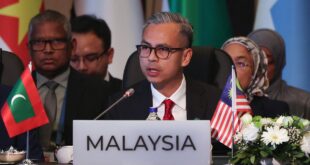An enthusiastic group of pro bono programmers strewn across the globe, including in Hong Kong, are building the open source, crypto-focused super app of Elon Musk’s dreams – but without the app.
For the past year, a dedicated group of developers have been working on a decentralised social media protocol, with new features rolling out at a pace that makes it hard to keep track. Updates made this year to the protocol, which was started in late 2020, and to related apps encompass everything from a marketplace with cryptocurrency payments to a TikTok-like short video feed.
The Nostr protocol has kindled such enthusiasm in a core group of users that they have taken to putting on conferences around the world, including an upcoming dual-city event called Nostrasia in Tokyo and Hong Kong from November 1 to 3.
While Musk has touted the free-speech bona fides of his new Twitter, which he renamed X, the crypto enthusiasts behind Nostr have built a platform that is censorship resistant and already allows for the instant transfer of bitcoin. It also has the backing of Twitter co-founder Jack Dorsey and has attracted users like US intelligence whistleblower Edward Snowden and Chinese-Malaysian singer Michael Wong. Interest has grown in mainland China, as well.
“I think the most amazing thing about Nostr is you have one identity on all platforms,” said Sherry, a programmer and data analyst from the mainland who organises Hong Kong Nostr meet-ups. She asked to go only by her English first name, which is not associated with her day job.
“Basically you can transfer (between) all platforms with one identity. That actually blew my mind,” she added. “It’s like a decentralised app store. Just this app store is not controlled by Apple; it’s controlled by all developers.”
Nostr started gaining widespread attention in February, when Apple said it had removed social media platform Damus, the first iOS app that connects to the network, from its mainland China App Store, citing local cybersecurity laws. Damus was one of the first apps to make Nostr user-friendly, and it came soon after Dorsey joined in December and Snowden in January.
Gareth Hayes, chief technology officer at blockchain consulting firm Emergent Solutions who has been living in Hong Kong for 10 years, was the one who introduced Sherry to Nostr. He first started contributing to the code in early 2022, when the protocol was still in its very early stages and only accessible through a command line.
Nostr features beyond microblogging
Feature NIP number Date created Marketplace NIP-15 2022-05-27 Public chat NIP-28 2022-09-11 Long-form content NIP-23 2023-02-04 Connect Lightning wallets NIP-47 2023-03-30 Calendar events NIP-52 2023-06-11 Live activities NIP-53 2023-07-08 Classified listings NIP-99 2023-07-13
With the many new use cases that have cropped up over the past year, Nostr can theoretically take the place of all the different types of social platforms people use today, Hayes explained. A new standard recently rolled out to help unify all these use cases by automatically launching different types of Nostr apps.
“Let’s say you build a Twitter kind of client. That interacts directly with the Instagram kind of client, and it can interact directly with a Spotify kind of client, where anyone can publish their music,” he said. “The networks combine together so there’s like a multiplier effect. It’s kind of like a super app.”
Perhaps the closest comparison today would be WeChat, the Chinese super app that Musk has suggested he wants X to emulate. While not concentrated in just one app, microblogging, long-form content, mobile payments (in bitcoin), classifieds, and live streaming are all capable over Nostr, with many of those features introduced just this year as usage spiked.
Unlike WeChat, however, it is very difficult for content to disappear from Nostr. Even when users want to delete their own posts, there is no guarantee those posts will be removed from all the Nostr relay servers to which they have been propagated. This is what drives much of the current support for Nostr, which is full of posts about seeking “freedom” from traditional social media, governments or anything else perceived to be violating the laissez-faire ethos.
The Damus ban in China also drove interest in the mainland, with the Damus relay, which was not blocked, being flooded with Chinese posts. Even if one relay is blocked, though, users can find another one that allows them to get through the country’s Great Firewall without a virtual private network.
“As long as you can post your note to one relay, there’s a great probability that they will help you rebroadcast to all relays,” Sherry said.
This ownerless tech has driven levels of enthusiasm rarely seen for social media products these days, belying the relatively small size of the network so far. A firm number is hard to ascertain given its decentralised nature, but Hayes said some estimates have peaked above one million users at any given time.
Nostr works using relay servers run by anyone who wants to set one up. Users pull and push content to relays they subscribe to, with the idea being that over time content gets propagated to every user looking for it. It uses public key infrastructure to identify users and content, so a specific string of characters is always associated with a specific user, post, or other type of content, called events.
Event types are specified in what are called NIPs, or Nostr Implementation Possibilities, which are an enumerated series of JavaScript Object Notation files built on top of the Nostr protocol (laid out in NIP-01). A NIP can specify a way of sending just about any type of content over the protocol, making Nostr infinitely extensible.
This set-up makes the protocol very different from ActivityPub, which underpins Mastodon. That network requires users to join instances owned and moderated by specific people, something that adds speed and stability but has more computing overhead and has been criticised by some, especially Nostr users, for not being truly decentralised.
Dorsey appears to ascribe to this view. “The only solution [to social media censorship] is to build on unowned protocols like Nostr and bitcoin,” the entrepreneur posted to Nostr on Sept 1. “All single points of control have to be removed.”
The billionaire has been so taken with Nostr that he donated 14 bitcoin to its creator, fiatjaf, after joining. He also helps fund conferences, the first of which was Nostrica in Costa Rica in March. During that conference, Dorsey solicited opinions on possible locations for future events, and Hayes said he pitched the idea of having one in Hong Kong.
That idea manifested as one part of Nostrasia. The main event, which includes talks and a hackathon, takes place in Tokyo, where Dorsey will be in attendance, and the Hong Kong arm is meant for people from mainland China so they do not have to deal with getting a visa for Japan, he added.
Hayes also helped kick off what has become a gushing stream of online content all about Nostr. His podcast Nostrovia was the first of many, he said. There are now also newsletters, blogs and at least one documentary.
“I wanted to have a higher-bandwidth discussion about what people are building and what approaches they’re taking and how they think about building with Nostr,” Hayes said. “Because it’s a different paradigm.”
For now, that paradigm has primarily attracted bitcoin users dedicated to the decentralised nature of blockchain and related technology. They dominate discussions on the network, many of whom are also programmers. Average users, however, are likely to encounter hurdles that make it less sticky than traditional social media.
Losing an account’s private key, for example, means the account is lost with it. The relay server approach also means content is slow to load as it pulls from multiple places at once.
Misinformation and conspiracy theories are another challenge. Nostr developers are looking for ways to allow users to filter out stuff they do not want to see while maintaining their original free-speech principles. Covid-19-related conspiracies, vaccine misinformation and anti-Semitic content is all easy to stumble across right now.
Dorsey himself has promoted conspiracy theories about the assassination of John F. Kennedy, along with the former US president’s nephew and current long-shot presidential candidate Robert Kennedy Jnr, whom Dorsey has endorsed. Dorsey regularly has some of the highest trending posts on the network.
But interest in Nostr is still growing, even in China, where Hayes said the focus is a little different.
“The Chinese community is business focused,” he said. “They’re looking at [Nostr] as a new kind of Web3.” The story is similar in other parts of Asia, he added, noting that a Nostr meetup in Macau this year largely attracted Web3 venture capitalists.
That may clash with the ideology of the primary builders of Nostr today. But for now it remains a compelling proof of concept for a “super app” that is genuinely beholden to no central authority or VC money. – South China Morning Post
 BeritaKini.biz Berita Viral Terkini di Malaysia
BeritaKini.biz Berita Viral Terkini di Malaysia





